
Site background
A little bit of history...
Lift-Ô-Loft, WHERE DOES THE NAME COME FROM?
The basis of this name came from a concept. Developers were inspired by the height, pronounced in French “o.tœʁ“ (O), of the impressive brick tower on the site, already visible from the motorway at the level of the bridge dam. They imagined installing a huge lift (LIFT) in the tower that would service the lofts (LOFT).
Who is hiding behind Lift-Ô-Loft ?

Monique and Christophe Nihon...
are in charge of Promactif Groupe. Strengthened by over 20 years of experience in the field, the group is the driver of socially relevant projects with high added value.
Lovers of the entrepreneurial background of the Piedboeuf company, and aware that urban wastelands must be renovated, in 2019 they decided to embark on a large-scale real estate project: Lift-Ô-Loft was born.
The patrimony
The Piedbœuf brewery
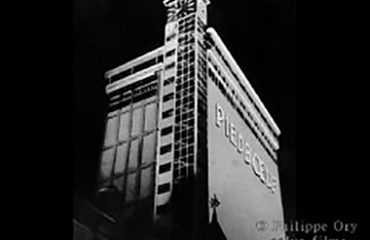
Lift-Ô-Loft is located on the historic site of the brewery established by the Piedbœuf family in Jupille, to the north-east of the city of Liège.
The origins of the Piedbœuf brewery date back to the end of the 19th century. The factory continued to develop until the First World War when the buildings of the thriving company were destroyed. The brewery was revived in the 1920s and business developed again.
In 1919 there were 10 workers and an annual production of 3,000 hl of beers on the Jupille site. This was a neighbourhood brewery which produced beer for a very local population. In 1980 it reached first place on the Belgian brewing market. The extraordinary growth from then on of the future AB-InBev Brewery can be attributed to Albert VAN DAMME, husband of a descendant of the Piedbœuf family. As proof, in 1998 there were nearly 2,066 workers and/or employees working on the site, and more than 3,155,000 hl were being produced annually and distributed worldwide.
A group of iconic buildings
The Piedbœuf Brewery has been modifying the landscape of Jupille for more than 180 years. Initially it consisted of a small building, but the brewery has grown over the years. Progressively, due to its commercial success and the development of new manufacturing techniques, several new buildings emerged on both sides of the Rue de Visé.
The most prominent building, the 89-metre-high Piedbœuf tower which was completed in 1939, looked over the landscape of Liège on its exit towards Limburg. The top three floors of the poured concrete and glass building were overlooked by an 8-metre-high ‘lighthouse’ tower adorned with a four-faced clock. This building, demolished in 2003, was a combination of three styles: Bauhaus, Streamline Moderne and Art Deco.
The five abandoned buildings on the hillside were sold at the end of 2018 following the modernisation of the production lines on the Meuse River side. They are no longer used for their initial purposes and they now belong to the Promactif group.
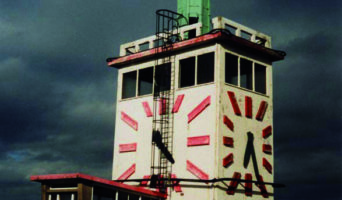
The patrimony
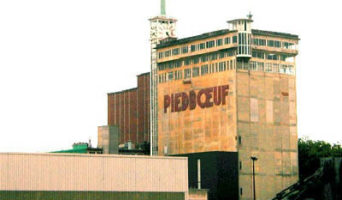
The Charlemagne spring
The Charlemagne spring, historically present under the old Piedbœuf building, was previously exploited for beer manufacturing. As part of the future renovation project, the geothermal/hydrothermal use of the spring water via a heat recovery network remains one of the most pertinent recycling avenues. Currently, the water enters the old brewhouse at a constant temperature of 12°C, and the former operating licenses reveal a spring flowrate of 10 m³/h.
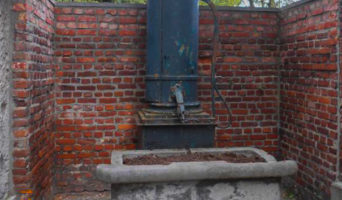
The Alpaïde fountain
Historically, the Alpaïde fountain held a prime position at Thier du Bac but it was later moved to a conservation area in Jupille. Alpaïde herself came from the Castle of Oupeye and was the mistress of Pépin from Herstal. According to Liège tradition, her brother, Dodon de Bolsée (Ans), is blamed with the assassination of Bishop Lambert because he had refused to bless the new couple at the Castle of Jupille. The deep fountain bowl recalls the large vessel in which the delectable Alpaïde bathed.
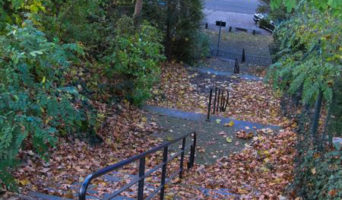
The Thier du Bac steps
The extensive renovation of the Thier du Bac steps that go from the Place Gît le Coq down to the Rue de Visé will make it easier to connect the upper part of this neighbourhood with the bus lines below. This work will be supported financially by the Liège City authorities. The inclusion of a ramp-type pathway has been studied, it will be accessible to cyclists and people with reduced mobility, winding through the hillsides and linking up with each level area right down to the bottom of the steps.